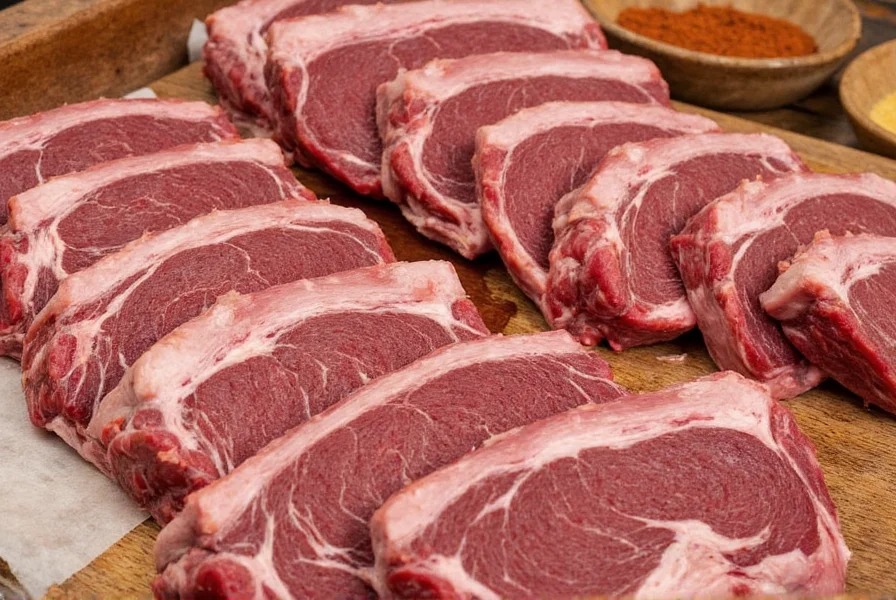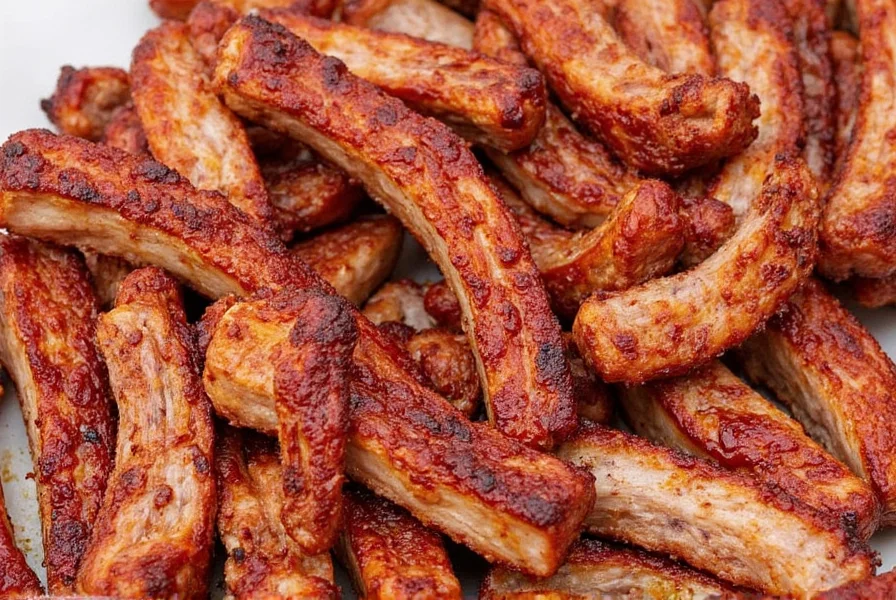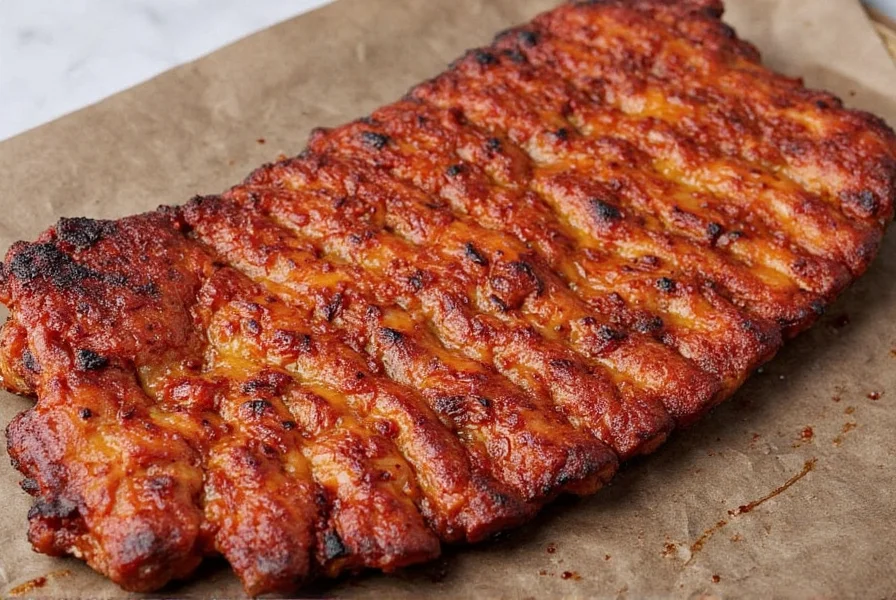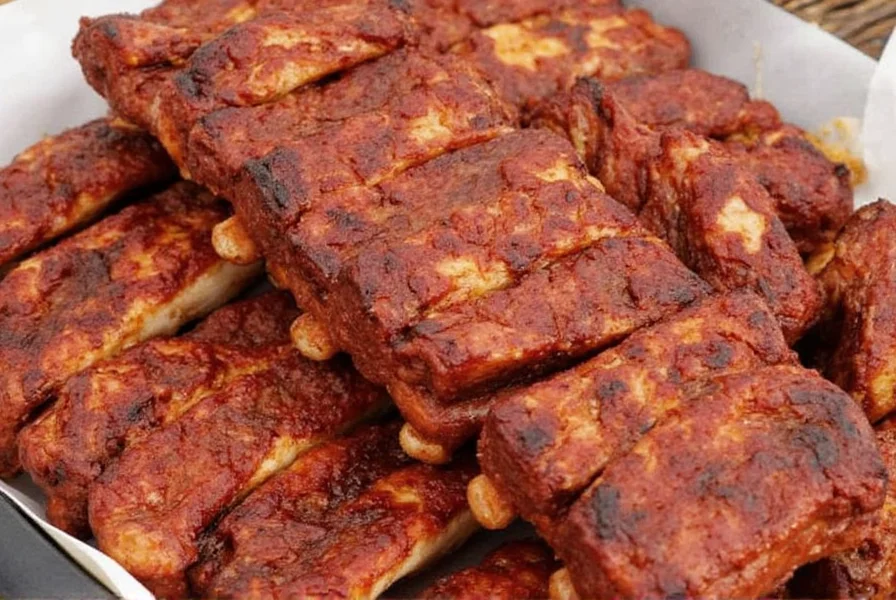Table of Contents
Introduction
Pork ribs come in several distinct types, each with unique characteristics that affect flavor, texture, and cooking methods. In this guide, we'll cover the 4 main types of pork ribs: spare ribs, baby back ribs, St. Louis ribs, and short ribs. We'll explain the differences between them, provide expert cooking techniques, and offer a buying guide to help you choose the perfect ribs for your next BBQ.

Different Kinds of Pork Ribs
When it comes to pork ribs, there are four distinct types, each with its own texture, flavor, and cooking method. Let's break them down:
Pork Spare Ribs
Pork spare ribs are the most commonly found type in supermarkets and are often used for slow-cooked dishes like barbecue. They come from the lower part of the pig's ribcage and have more fat, which gives them a rich, tender flavor. These ribs are great for long, low-and-slow cooking methods such as smoking or braising. According to professional chefs, the key to perfect spare ribs is maintaining consistent low temperatures (225-250°F) for 5-6 hours to break down collagen without drying out the meat.

Pork Baby Back Ribs
These are the smaller, more tender ribs that come from the top of the ribcage near the spine. They're known for their mild flavor and leaner meat, making them ideal for quick grilling or pan-searing. Baby back ribs are often considered the premium option because of their tenderness and presentation. For best results, cook at 275°F for 3-4 hours, applying sauce only during the last 15 minutes to prevent burning.
Pork St. Louis Ribs
St. Louis ribs are a trimmed version of spare ribs, with the sternum and cartilage removed for a more uniform shape. They offer a balance between the richness of spare ribs and the leanness of baby backs. These ribs are perfect for those who want the best of both worlds and are popular at backyard barbecues. Culinary experts recommend applying a dry rub 2 hours before cooking for maximum flavor penetration.

Pork Short Ribs
Short ribs come from the chuck or plate area of the pig, and are meatier and less bony than traditional ribs. They're excellent for braising or stewing, developing deep, savory flavors when cooked slowly. For optimal results, brown the ribs first, then simmer in a rich broth or sauce for 2.5-3 hours until fork-tender. This cut is particularly popular in Asian-inspired dishes like Korean galbi or Chinese red-braised ribs.

Cooking Tips for Each Type
Now that you know the different kinds of pork ribs, here are professional cooking tips to help you achieve perfect results:
- Pork Spare Ribs: Use a dry rub or wet marinade before slow-smoking or braising. Maintain 225-250°F for 5-6 hours until internal temperature reaches 195-205°F. Apply mop sauce every 45 minutes for extra moisture.
- Pork Baby Back Ribs: Marinate briefly and grill over medium heat (300-325°F) for 2-3 hours. Brush with sauce only during the last 15 minutes to prevent burning. The "bend test" works well: when the ribs bend easily and crack on the surface, they're done.
- Pork St. Louis Ribs: Trim any excess fat and cook using the same methods as spare ribs. Their even shape makes them ideal for consistent cooking. For a perfect crust, apply a sugar-based rub and cook at 275°F for 4-5 hours.
- Pork Short Ribs: Brown them first, then simmer in a rich broth or sauce for 2.5-3 hours. They're excellent in stews or as a main dish. For Asian-style preparations, marinate in soy sauce, ginger, and garlic for 4 hours before cooking.
Buying Guide: Choosing the Right Ribs
Choosing the right kind of pork ribs depends on your cooking style, flavor preferences, and budget. Here's a detailed comparison:
| Type of Ribs | Texture | Flavor | Cooking Method | Best For |
|---|---|---|---|---|
| Pork Spare Ribs | Tender, fatty | Rich, smoky | Smoking, braising | Barbecue, slow-cooked meals |
| Pork Baby Back Ribs | Tender, lean | Mild, juicy | Grilling, pan-searing | Quick meals, dinner parties |
| Pork St. Louis Ribs | Tender, balanced | Medium-rich | Smoking, baking | Backyard barbecues, family gatherings |
| Pork Short Ribs | Meaty, dense | Deep, savory | Braising, stewing | Hearty dishes, winter meals |
When buying, look for ribs that are fresh, with a bright red color and minimal odor. If possible, choose organic or pasture-raised options for better flavor and quality. For BBQ competitions, St. Louis ribs are often preferred for their uniform shape, while spare ribs are favored for traditional Texas-style barbecue.
Frequently Asked Questions
What's the main difference between spare ribs and baby back ribs?
Spare ribs come from the lower belly area and have more fat and connective tissue, making them ideal for slow cooking. Baby back ribs are taken from along the spine, are leaner and more tender, and cook faster—perfect for grilling. According to the American Meat Institute, spare ribs contain about 40% more fat than baby backs, which affects both cooking time and flavor profile.
Which ribs are best for beginners cooking barbecue?
St. Louis ribs are the most beginner-friendly due to their uniform shape and balanced fat content. They're easier to handle on the grill than spare ribs and more forgiving than baby backs, which require precise timing. Professional pitmasters recommend starting with St. Louis ribs for your first BBQ attempt as they provide consistent results with minimal risk of overcooking.
How do I know when pork ribs are fully cooked?
Ribs are done when the meat retracts from the bones by about 1/4 to 1/2 inch, feels tender when pressed, and reaches an internal temperature of 195-205°F. The "bend test" works well: lift the rack from one end—if it bends easily and cracks form on the surface, they're ready. For precise results, use a meat thermometer to confirm internal temperature.
Can I use the same seasoning for all rib types?
Yes, but adjust based on fat content. Use heavier rubs with more sugar for leaner baby backs (to prevent burning), and bolder, salt-forward blends for fattier spare ribs. Always apply seasoning at least 1 hour before cooking for optimal flavor penetration. For short ribs, consider adding Asian-inspired ingredients like soy sauce or ginger for deeper flavor complexity.
Why are my ribs tough even after long cooking?
This usually happens when ribs are cooked too quickly at high temperatures. True tenderness comes from slow collagen breakdown—maintain 225-250°F for spare/St. Louis ribs (5-6 hours) or 275°F for baby backs (3-4 hours). Undercooked ribs won't pull cleanly from the bone. If ribs remain tough, they may need additional cooking time at low temperatures to fully break down connective tissue.
Conclusion
Understanding the different kinds of pork ribs is key to mastering the art of cooking with them. Whether you're a seasoned chef or just starting out, experimenting with various types can open up a whole new world of flavors and techniques. From the rich, fatty spare ribs to the lean, tender baby backs, each cut has its place in the kitchen. For the best results, always match the rib type to your cooking method and desired flavor profile. Next time you're planning a meal, take a moment to consider which type of pork ribs will best suit your recipe—and don't forget to add some spice to bring out the full flavor!










 浙公网安备
33010002000092号
浙公网安备
33010002000092号 浙B2-20120091-4
浙B2-20120091-4